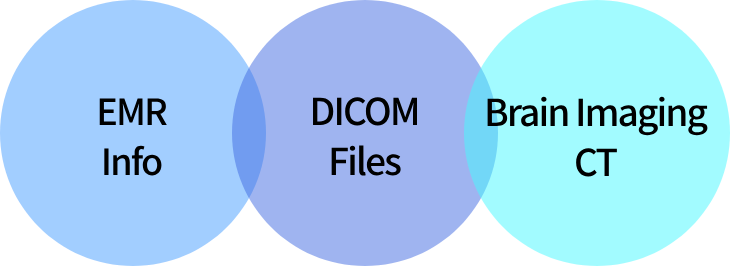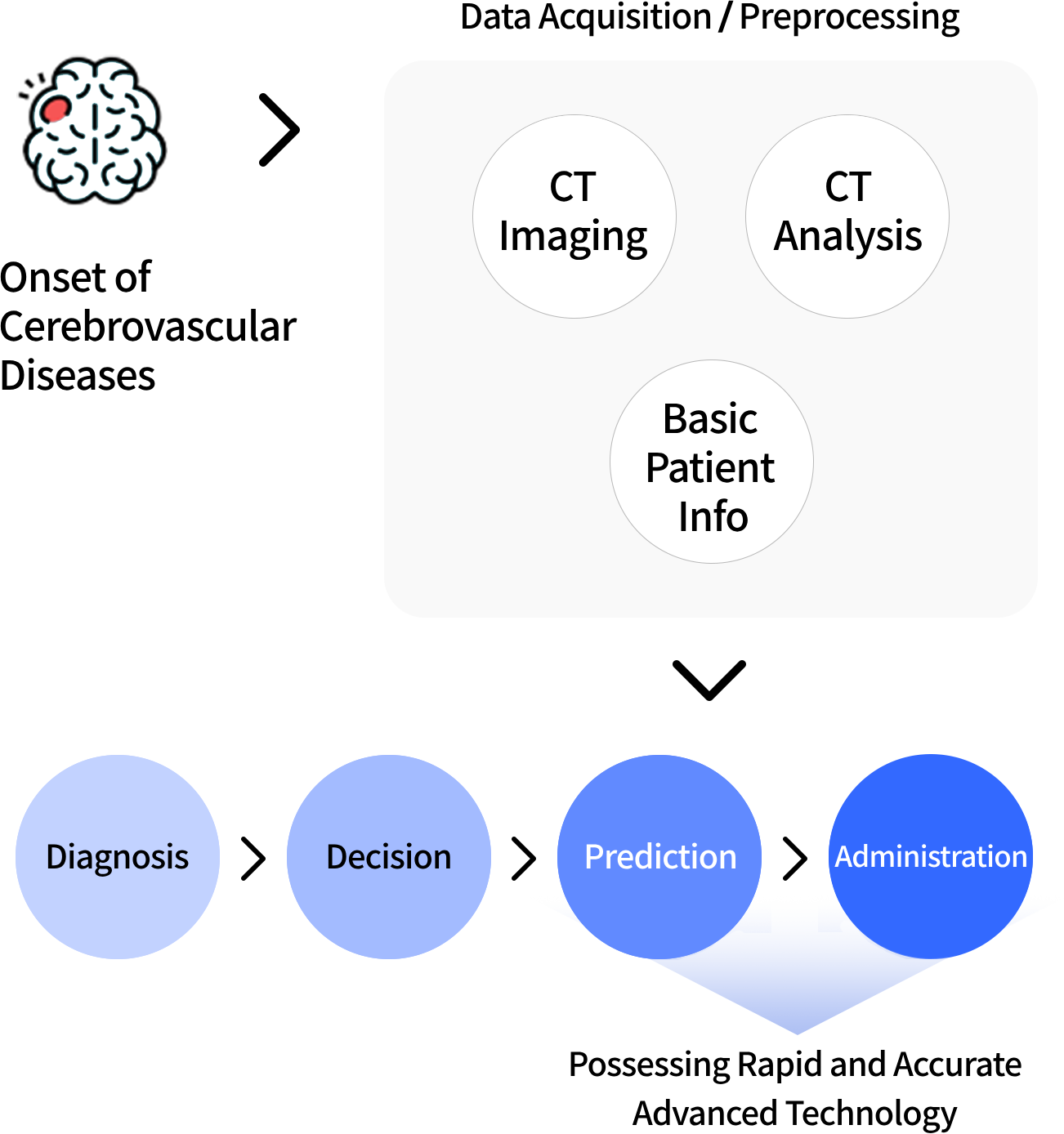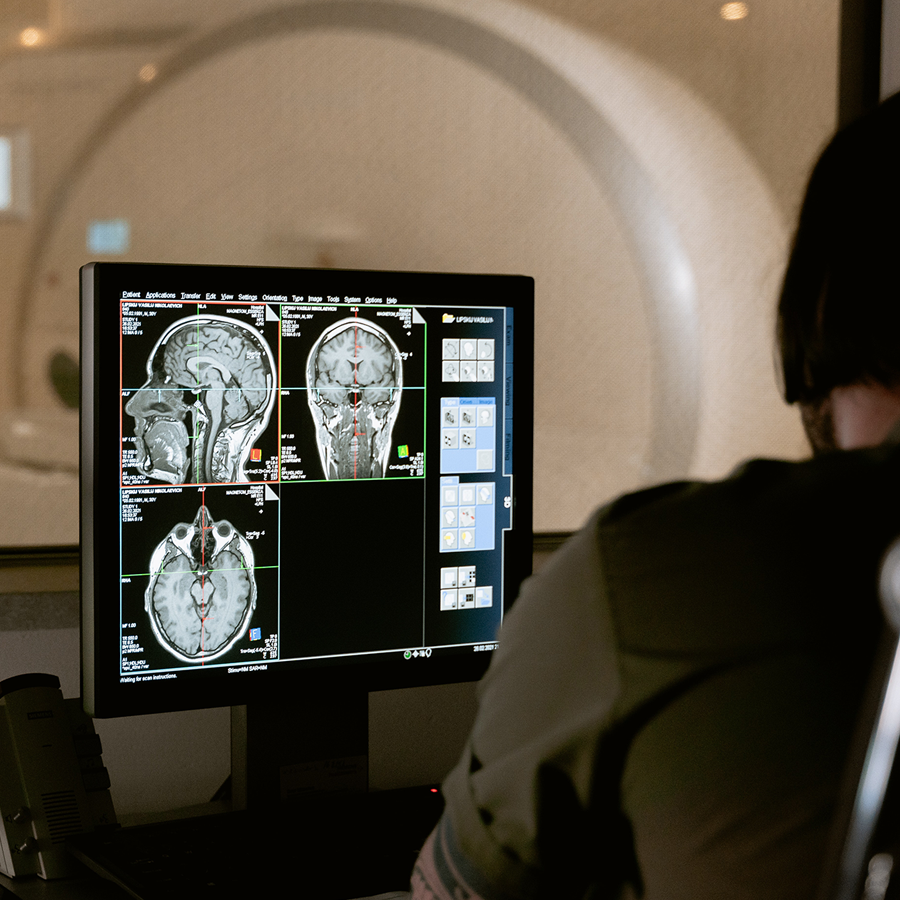MAPIS
Medical Artificial Intelligence Prediction Image System
What is MAPIS?
Abbreviation for Medical Artificial Intelligence Prediction Image System, when an emergency patient with cerebral infarction visits the hospital and undergoes a CT scan, the artificial intelligence predictive diagnosis system 'MAPIS' is used to combine image information and patient information in real time to provide prediction results of hemorrhagic transformation after administration of thrombolytics service.

- Convenience
- Immediately provides AI algorithm-based prediction information immediately after brain computed tomography and utilizes it without separate information entry work
- Stability
- Supports decision-making by providing prediction results so that non-specialists/unskilled doctors can use them even in situations where a neurologist is not present
- Economics
- Patient protection is strengthened by reducing the number of patients who are transferred or delayed in treatment due to the absence of a specialist, and treatment costs (including rehabilitation costs) and incidental costs are reduced, reducing national medical costs
A machine learning framework that can predict bleeding transformation with high reliability after administration of thrombolytics based on quantitative analysis of emergency CT and basic patient information

Achieving accuracy of over 75% using only non-contrast CT images for the first time in the world
→ Targeting hemorrhagic transformation prediction model accuracy (FSIM) of over 95%

CORE TECHNOLOGY
Medical Data + XML + AI Algorithm
Tech that provides accurate and fast diagnostic solutions through data preprocessing automation technology and artificial intelligence learning
- Medical Data Set
- Possesses high-quality structured / unstructured data such as medical information DICOM, CT, and EMR text data of patients with cerebrovascular disease (stroke)
- DICOM to XML
- Possesses technology to change unstructured / structured medical data into machine-readable metadata
Machine readable AI algorithm strategy that enables the immediate application of accumulated data for future predictions, transitioning seamlessly from the present to the future
- AI Algorithm
- Improving treatment strategies for cerebrovascular disease (stroke) patients by establishing various CDSSs through artificial intelligence
Improving the performance of prediction algorithms through multimodal data
EXPECTED EFFECTS OF MAPIS
Diagnostic Effects
- Due to the nature of the disease, the short golden time and the occurrence of complications in patients due to treatment selection can seriously affect the prognosis of patients
- Through rapid and accurate treatment intervention through CDSS for hyperacute cerebrovascular disease (stroke), treatment can be successfully completed within the golden time
- Reduces misdiagnosis rates and
reduces diagnostic deviations by hospital
Therapeutic Effects
- Through the Drip and ship strategy, patient linkage to the base cerebrovascular disease (stroke) center can be optimized after intravenous thrombolytic drug administration at a secondary hospital
- By establishing an AI prediction system, we provide a stable medical support system at any time, dramatically improving the prognosis of cerebral infarction patients through rapid treatment within the golden time
- Protecting the lives of emergency patients and
enhancing medical services
※ CDSS : Clinical Decision Support System
※ Drip and ship strategy: A strategy to quickly transfer a patient to a high-level base hospital after administering thrombolytics to the patient.